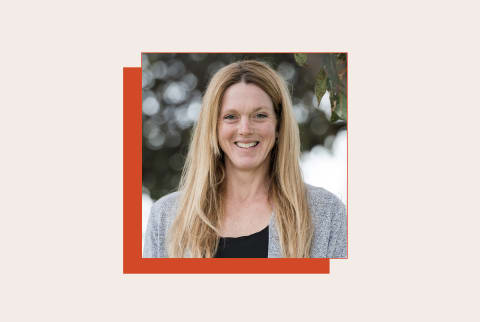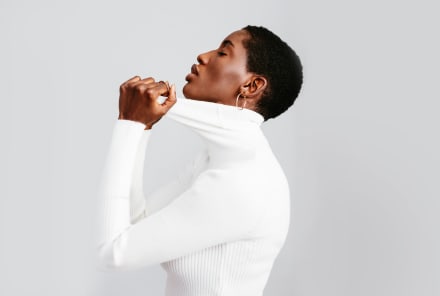Advertisement
What Women Need To Know About The 3 Buzziest Longevity Topics


Medical research has a wildly problematic gender gap.
For centuries, women have been underrepresented in research topics including cardiovascular disease, cancer, Alzheimer's disease, building muscle, nutrition, movement, and so much more. Oftentimes, women are just given the same protocols as men—and they suffer the health consequences.
The medical system has neglected women for far too long, and it's high time we close the gender gap.
One of the women leading the charge is exercise physiologist and nutrition scientist Stacy Sims, Ph.D., who aims to revolutionize exercise nutrition and performance for women. She frequently works on ethics boards to review researchers' scientific designs, has published over 70 peer-reviewed papers, and she's a featured expert in our upcoming 2024 Well-Being Forecast.
And on this episode of the mindbodygreen podcast, Sims declares what women need to know about today's buzziest longevity topics. Prepare to be floored by her myth-busting below:
Zone 2 training
Zone 2 is all the rage these days. In case you need a refresher, Zone 2 cardio is an exercise performed within a heart rate zone that represents 60% to 70% of the maximum heart rate. Think of it as light exercise that you can continue for a prolonged period of time.
It's received plenty of buzz thanks to its health benefits like weight loss and mitochondrial health, but according to Sims, "The conversation around Zone 2 is all based on male physiology and data."
See, Zone 2 training helps stimulate Type 1 ("slow twitch") muscle fibers, which increase the mitochondrial density in our muscles. However, "Women already have a larger amount of slow twitch or oxidative fibers," Sims notes. "Women have more mitochondria density [and] better mitochondria respiration," she adds. "When we look at men, yes, they need to do Zone 2 to increase mitochondrial density and the respiratory capacity of mitochondria, but women don't."
That's not to say Zone 2 is necessarily bad for women—the best exercise is the one you'll actually do, after all. Zone 2 is great for active recovery and endurance, but if you're a woman hoping to exercise for muscle gains and mitochondrial health, Sims argues it's not the best approach. (You can dive into the research in Sims' comprehensive blog post here.)
Rather, "Women need to do more of that high-intensity work," she explains. Think sprints and resistance training versus continuous, intermediate cardio so that the body actually recognizes your efforts.
Cold plunge
Another buzzy one, cold plunging has received a ton of hype as of late. But it is possible to overdo it on the frigid temps—and for women, that threshold is a bit higher.
"Cold plunge is beneficial for women but not as cold as what people think," Sims says. "When we look at the temperature gradient of when women start to feel cold, it's around 16 degrees Celsius, which is about 55 to 56 degrees Fahrenheit." And women shiver at a higher temperature than men1, showing that they are more sensitive to the cold.
"If women are getting into too cold of water, then they have a severe vasoconstriction—almost Raynaud's response," Sims adds. "Then that is a sympathetic response; we don't get the parasympathetic response that we need and want from cold [plunge]."
That said, cold plunge is associated with plenty of health benefits—for men and women! Just check your temps: Women don't necessarily need to hop into an ice bath colder than 55 degrees or so.
Post-workout protein
Look, you're probably not getting enough protein, no matter your gender. Sims agrees! "I feel like everyone's under-proteined," she declares.
The recommended dietary allowance (RDA) for the average sedentary adult (or, we should say, the average sedentary man) is a conservative 0.8 gram per kilogram of body weight per day, but after consulting protein experts and digging into the research2, we believe that this RDA is way too low. Most active people should aim to consume at least 100 grams of protein per day for optimal health.
Now, the bulk of the sex differences occur in terms of timing. "It's super important to get in [protein] post-exercise because women's bodies come back down to a baseline level a lot faster than men's," Sims notes. For premenopausal women, she recommends aiming for 30 grams of high-quality protein within 30 to 45 minutes after exercise.
"[That] tends to be the sweet spot to continue muscle-protein synthesis for up to 24 hours," she says. And that number climbs once you hit perimenopause—she encourages 40 grams of high-quality protein after a workout for late peri- and postmenopausal women.
Looking for some high-protein snacks to fuel your muscles? See here for some healthy foods to consume post-workout.
The takeaway
We need more nuanced research on women's bodies, period and full stop. Women are not small men, as Sims declared during her famous TEDX talk, and they deserve to know exactly how to optimize their health. Sims has been a champion for closing the gender gap in medical research—and in 2024, we suspect more women (and allies!) will join her cause.
We hope you enjoy this episode! And don't forget to subscribe to our podcast on iTunes, Google Podcasts, Spotify, Amazon Music, or YouTube!


















